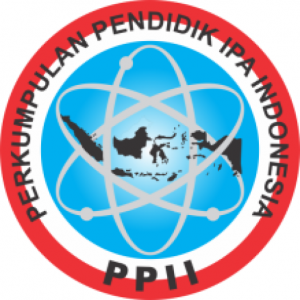Enzyme Activities and Growth Abilities: Exploring Wood Decay Fungi in Banyuasin Oil Palm Plantations
Authors
Mutiara Arieny , Nengah Dwianita KuswytasariDOI:
10.29303/jbt.v25i1.8440Published:
2025-01-30Issue:
Vol. 25 No. 1 (2025): Januari - MaretKeywords:
Enzyme activity, elaeis guineensis, growth abilities, identification, oil palm, wood fungus.Articles
Downloads
How to Cite
Downloads
Metrics
Abstract
Wood fungi, frequently identified as the cause of Wood Rot Disease, produce enzymes that break down key components of plant cell walls, such as cellulose and lignin, allowing the fungi to act as pathogens. This study aims to identify wood fungi present in oil palm plants in Banyuasin, South Sumatra, and to test their growth abilities on various types of wood and enzyme activites (ligninase, cellulase, and hemicellulase). The research methods consist of isolation using an exploration method, morphological identification, and enzyme activities tests (cellulase, hemicellulase, and ligninase). Wood fungus isolation used Potato Dextrose Agar (PDA) media. Fungal morphology was identified macroscopically and microscopically. The data obtained from fungal morphology observations, fungal growth on wood, and enzyme activity were analyzed descriptively. A total of 11 isolates were obtained. Isolates A6, A7, and A11 showed high enzymatic activity, particularly in breaking down lignin, cellulose, and hemicellulose, which potentially causes BPB in oil palms. The cellulase enzyme activity, measured with CMC substrate, indicated that isolate A6 had the highest value (157.30 U/mL), followed by A8 (151.75 U/mL), while A10 had the lowest value (20.58 U/mL). Using Avicel substrate to measure hemicellulase, isolate A10 showed the highest value (108.67 U/mL). For ligninase measured with tannin substrate, isolate A4 had the highest activity (59.89 U/mL), and A10 had the lowest (2.42 U/mL).
References
Ab Wahab, A. F. F., Zairun, M. A., Daud, K. H. M., Bakar, F. D. A., Bharudin, I., & Murad, A. M. A. (2022), “Evaluation and Improvement of Protocols for Ganoderma boninense Protoplast Isolation and Regeneration”, Malaysian Applied Biology, Vol. 51, No. 5, hal. 43-57.
Atmaja, Y. P., Akoeb E. N., M., dan Siregar M. A., (2020), “Pengaruh kapasitas olah, ketersediaan bahan baku dan capaian rendemen terhadap harga pokok pengolahan pabrik kelapa sawit di pabrik kelapa sawit Torgama PT. Perkebunan Nusantara III (persero)”, Jurnal Ilmiah Magister Agribisnis, Vol. 2, No. 2, hal. 156-166.
Barman, A., Nath, A., & Thakur, D. (2020). Identification and characterization of fungi associated with blister blight lesions of tea (Camellia sinensis L. Kuntze) isolated from Meghalaya, India. Microbiological Research, 240, 126561.
Bhunjun, C. S., Phillips, A. J., Jayawardena, R. S., Promputtha, I., & Hyde, K. D. (2021). Importance of molecular data to identify fungal plant pathogens and guidelines for pathogenicity testing based on Koch’s postulates. Pathogens, 10(9), 1096.
BPS. (2020), Statistik kelapa sawit Indonesia 2020, Katalog 5504003. Badan Pusat Statistik Indonesia.
BPS. (2021), Statistik kelapa sawit Indonesia 2021, Katalog 5504003. Badan Pusat Statistik Indonesia.
Budi, M. B. S., Giyanto, G., & Tondok, E. T. (2022), “Isolation of actinomycetes from peatland to suppress the growth of Ganoderma boninense the causal agent of basal stem rot disease in oil palm”, Biodiversitas Journal of Biological Diversity, Vol. 23, No. 11.
Chethana, K. T., Manawasinghe, I. S., Hurdeal, V. G., Bhunjun, C. S., Appadoo, M. A., Gentekaki, E., ... & Hyde, K. D. (2021). What are fungal species and how to delineate them?. Fungal Diversity, 109(1), 1-25.
Cui, T., Yuan, B., Guo, H., Tian, H., Wang, W., Ma, Y., ... & Fei, Q. (2021). Enhanced lignin biodegradation by consortium of white rot fungi: microbial synergistic effects and product mapping. Biotechnology for Biofuels, 14, 1-11.
Ditjen Perkebunan. (2022), Program dan Kegiatan Ditjen. Perkebunan Tahun 2022, Sosialisasi E-Proposal Untuk Perencanaan Tahun 2022, Bogor
Fukasawa, Y. (2021), “Ecological impacts of fungal wood decay types: A review of current knowledge and future research directions”, Ecological Research, Vol.36, No.6, hal. 910-931.
Gbenebor, O. P., Olanrewaju, O. A., Usman, M. A., & Adeosun, S. O. (2023), “Lignin from Brewers’ Spent Grain: Structural and Thermal Evaluations”, Polymers, Vol. 15, No.10, hal. 2346.
Hess, J., Balasundaram, S. V., Bakkemo, R. I., Drula, E., Henrissat, B., Högberg, N., ... & Skrede, I. (2021), “Niche differentiation and evolution of the wood decay machinery in the invasive fungus Serpula lacrymans,” The ISME Journal, Vol.15, No. 2, hal.592-604.
Hiltunen, M., Ament-Velásquez, S. L., & Johannesson, H. (2021). The assembled and annotated genome of the fairy-ring fungus Marasmius oreades. Genome Biology and Evolution, 13(7), evab126.
Huang, Q., An, H., Song, H., Mao, H., Shen, W., & Dong, J. (2015). Diversity and biotransformative potential of endophytic fungi associated with the medicinal plant Kadsura angustifolia. Research in microbiology, 166(1), 45-55.
Lücking, R., Aime, M. C., Robbertse, B., Miller, A. N., Ariyawansa, H. A., Aoki, T., ... & Schoch, C. L. (2020). Unambiguous identification of fungi: where do we stand and how accurate and precise is fungal DNA barcoding?. IMA fungus, 11(1), 14.
Senanayake, I. C., Rathnayaka, A. R., Marasinghe, D. S., Calabon, M. S., Gentekaki, E., Lee, H. B., ... & Xiang, M. M. (2020). Morphological approaches in studying fungi: Collection, examination, isolation, sporulation and preservation. Mycosphere, 11(1), 2678-2754.
Sinaga, R. E, (2013), Karakterisasi Enzim Selulase Dan Aplikasinya Pada Substrat Limbah Pertanian, tesis, Institut Pertanian Bogor, Bogor.
Suprapti, S., & Djarwanto. (2014). “Ketahanan lima jenis kayu asal Ciamis terhadap sebelas strain jamur pelapuk”. Jurnal Penelitian Hasil Hutan, _x0016_(3), 189–198.
Luangharn, T.; Karunarathna, S.C.; Dutta, A.K.; Paloi, S.; Promputtha, I.; Hyde, K.D.; Xu, J.; Mortimer, P.E. (2021), “Ganoderma (Ganodermataceae, Basidiomycota) Species from the Greater Mekong Subregion”, Jurnal Fungi. Vol. 7, No.1, hal.819, https://doi.org/10.3390/jof7100819.
Meiliawati, D., & Kuswytasari, N. D. (2013), “Isolasi dan Identifikasi Jamur Kayu Lignolitik dari Vegetasi Mangrove Wonorejo”, Jurnal Sains dan Seni ITS, Vol. 2, No.1, hal. E16-E19.Ninkuu, V., Yan, J., Fu, Z., Yang, T., Ziemah, J., Ullrich, M. S., ... & Zeng, H. (2022). Lignin and its pathway-associated phytoalexins modulate plant defense against fungi. Journal of Fungi, 9(1), 52.
Nurika, I., Suhartini, S., & Barker, G. C. (2020), “Biotransformation of tropical lignocellulosic feedstock using the brown rot fungus Serpula lacrymans”, Waste and biomass valorization, Vol. 11, No.1, hal. 2689-2700.
Okal, E. J., Aslam, M. M., Karanja, J. K., & Nyimbo, W. J. (2020). Mini review: Advances in understanding regulation of cellulase enzyme in white-rot basidiomycetes. Microbial Pathogenesis, 147, 104410.
Priwiratama, H., Susanto, A., Prasetya A. E., dan Syarovi, M., (2020), “Laju Fotosintesis pada tanaman kelapa sawit terinfeksi karat daun Cephaleuros virescens”, Jurnal Fitopatologi Indonesia, Vol. 16, No.1, hal. 21-29.
Rehman, A., Usman, M., Afshan, N. U. S., & Khalid, A. N. (2024). Taxonomy and phylogeny reveal two novel species of genus Lepiota (Agaricaceae, Agaricales) from Punjab, Pakistan. Plant Systematics and Evolution, 310(2), 8.
Saldarriaga-Hernández, S., Velasco-Ayala, C., Flores, P. L. I., de Jesús Rostro-Alanis, M., Parra-Saldivar, R., Iqbal, H. M., & Carrillo-Nieves, D. (2020), “Biotransformation of lignocellulosic biomass into industrially relevant products with the aid of fungi-derived lignocellulolytic enzymes”, International journal of biological macromolecules, Vol. 161, No.1, hal. 1099-1116.
Senanayake, I. C., Rathnayaka, A. R., Marasinghe, D. S., Calabon, M. S., Gentekaki, E., Lee, H. B., ... & Xiang, M. M. (2020). Morphological approaches in studying fungi: Collection, examination, isolation, sporulation and preservation. Mycosphere, 11(1), 2678-2754.
Siddiqui, Y., Surendran, A., Paterson, R.R.M., Ali, A. & Ahmad, K. (2021), “Current strategies and perspectives in detection and control of basal stem rot of oil palm”, Saudi Journal of Biological Sciences, Vol. 28, No.5, hal. 2840-2849, https://doi.org/10.1016/j.sjbs.2021.02.016.
Standar Nasional Indonesia (SNI). (2014). Uji ketahanan kayu terhadap organisme perusak kayu (SNI 7207-2014). Badan Standardisasi Nasional, Jakarta
Subowo, YB. (2010), “Uji Aktivitas Enzim Selulase dan Ligninase dari Beberapa Jamur dan Potensinya Sebagai Pendukung Pertumbuhan Tanaman Terong (Solarium melongena)”, Berita Biologi. Vol.10, No.1. hal 1-6.
Sugano, J., Maina, N., Wallenius, J., & Hildén, K. (2021), “Enhanced lignocellulolytic enzyme activities on hardwood and softwood during interspecific interactions of white-and brown-rot fungi”, Journal of fungi, Vol. 7, No.4, hal. 265.
Suryadi, H., Judono, J. J., Putri, M. R., Eclessia, A. D., Ulhaq, J. M., Agustina, D. N., & Sumiati, T. (2022), “Biodelignification of lignocellulose using ligninolytic enzymes from white-rot fungi”, Heliyon.
Usman, M., Awan, A. N., Yousaf, N., Murtaza, G., Hanif, M., & Khalid, A. N. (2022). First records of Bolbitius coprophilus (Agaricales, Bolbitiaceae) from Pakistan. Check List, 18(3), 525-533.
Vetter, J. (2023). Amanitins: the most poisonous molecules of the fungal world. Molecules, 28(15), 5932.
Wahyuni, M. (2022), Kelapa Sawit, Biologi, Pertumbuhan dan Produktivitasnya, Jakarta: Cahaya Harapan.
White, K. R., Jergensen, J. A., & Lam, A. (2022). Pluteus cervinus.
Yang, J., Yue, H. R., Pan, L. Y., Feng, J. X., Zhao, S., Suwannarangsee, S., ... & Zhao, X. Q. (2023). Fungal strain improvement for efficient cellulase production and lignocellulosic biorefinery: Current status and future prospects. Bioresource Technology, 385, 129449.
Zhuo, R., & Fan, F. (2021), “A comprehensive insight into the application of white rot fungi and their lignocellulolytic enzymes in the removal of organic pollutants”, Science of the Total Environment, Vol. 778, 146132.
Zhu, S., Chen, A., Chai, Y., Cao, R., Zeng, J., Bai, M., ... & Wang, X. (2023), “Extracellular enzyme mediated biotransformation of imidacloprid by white-rot fungus Phanerochaete chrysosporium: Mechanisms, pathways, and toxicity”, Chemical Engineering Journal, Vo. 472, No.1, 144798.
Zhu, Y., Plaza, N., Kojima, Y., Yoshida, M., Zhang, J., Jellison, J., ... & Goodell, B. (2020), “Nanostructural analysis of enzymatic and non-enzymatic brown rot fungal deconstruction of the lignocellulose cell wall”, Frontiers in Microbiology, Vol.11, No.1, 138.
License
Copyright (c) 2025 Mutiara Arieny, Nengah Dwianita Kuswytasari

This work is licensed under a Creative Commons Attribution 4.0 International License.

Jurnal Biologi Tropis is licensed under a Creative Commons Attribution 4.0 International License.
The copyright of the received article shall be assigned to the author as the owner of the paper. The intended copyright includes the right to publish the article in various forms (including reprints). The journal maintains the publishing rights to the published articles.
Authors are permitted to disseminate published articles by sharing the link/DOI of the article at the journal. Authors are allowed to use their articles for any legal purposes deemed necessary without written permission from the journal with an acknowledgment of initial publication to this journal.


























